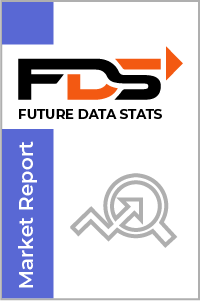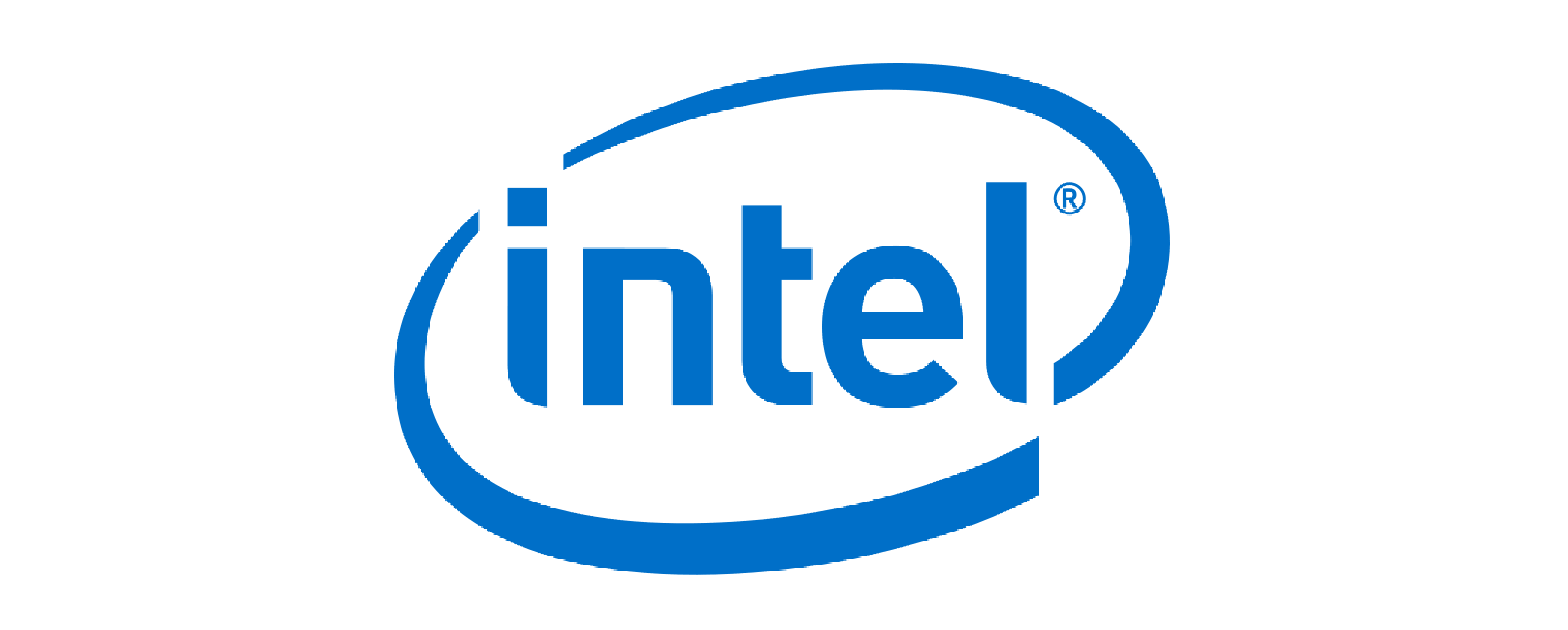The global AI Accelerator Semiconductor Market is witnessing consistent growth, with its size estimated at USD 25 Billion in 2025 and projected to reach USD 60 Billion by 2033, expanding at a CAGR of 11% during the forecast period.
The AI Accelerator Semiconductor Market Research Report from Future Data Stats delivers an in-depth and insightful analysis of the market landscape, drawing on extensive historical data from 2021 to 2023 to illuminate key trends and growth patterns. Establishing 2024 as a pivotal baseline year, this report meticulously explores consumer behaviors, competitive dynamics, and regulatory influences that are shaping the industry. Beyond mere data analysis, it offers a robust forecast for the years 2025 to 2033, harnessing advanced analytical techniques to chart a clear growth trajectory. By identifying emerging opportunities and anticipating potential challenges, this report equips stakeholders with invaluable insights, empowering them to navigate the ever-evolving market landscape with confidence and strategic foresight.
MARKET OVERVIEW:
The AI Accelerator Semiconductor Market serves the growing need for high-speed, efficient processing of artificial intelligence workloads. These specialized chips handle complex tasks such as deep learning, natural language processing, and computer vision with greater speed and lower power consumption than traditional processors. Companies deploy them in everything from data centers to edge devices to improve AI performance and responsiveness. Manufacturers design these semiconductors to support evolving AI models while optimizing hardware performance. As industries increasingly rely on intelligent automation and real-time data processing, the demand for AI accelerators continues to rise. Their purpose lies in enabling scalable, faster, and more energy-efficient AI computing across sectors like healthcare, automotive, finance, and consumer electronics.
MARKET DYNAMICS:
The AI Accelerator Semiconductor Market continues to evolve with the rise of edge computing, custom AI chip development, and tighter integration with AI software frameworks. Companies are shifting toward specialized processors like NPUs and ASICs to improve inference speed and power efficiency across devices. Cloud service providers are also investing in in-house AI chips to optimize data center performance and reduce dependency on third-party hardware suppliers. Looking ahead, the market will likely see rapid adoption of low-power AI accelerators in IoT and wearable devices. Advancements in 3D chip packaging and neuromorphic computing are expected to shape future product innovations. As industries embrace AI-driven automation, the business scope for these semiconductors will expand further, opening new opportunities in sectors such as healthcare, autonomous vehicles, and smart manufacturing.
Organizations across various sectors, including healthcare, finance, and automotive, seek faster processing capabilities to handle vast amounts of data and complex algorithms. Additionally, advancements in machine learning and artificial intelligence applications drive innovation in semiconductor design, pushing manufacturers to develop more efficient and powerful chips. This surge in demand propels investment in research and development, fostering a competitive landscape where companies strive to enhance their product offerings. Despite the market's growth potential, challenges persist. High production costs and the complexities of semiconductor fabrication can deter new entrants and limit scalability for some firms. Furthermore, supply chain disruptions and geopolitical tensions can impact availability and pricing. However, these challenges also present opportunities. Companies that can innovate in manufacturing processes or explore alternative materials may gain a competitive edge. Additionally, as industries increasingly adopt AI technologies, the demand for specialized semiconductors will continue to rise, paving the way for new applications and market expansion.
AI ACCELERATOR SEMICONDUCTOR MARKET SEGMENTATION ANALYSIS
BY TYPE:
The AI accelerator semiconductor market showcases rapid innovation across distinct types of processors, each uniquely tailored to specific computational needs. GPUs lead this transformation due to their parallel processing power, which has made them essential in AI workloads, particularly for training large models. Their versatility and availability from major players like NVIDIA have solidified their widespread use across sectors ranging from scientific research to gaming and AI model training. FPGAs offer flexibility and energy efficiency, enabling users to reprogram logic gates for diverse AI tasks. Industries with frequently changing algorithm requirements—such as telecommunications and defense—favor FPGAs for their ability to deliver tailored performance without incurring the cost and time associated with ASIC design. Their reconfigurability ensures adaptability, especially in edge computing and low-latency environments.
ASICs dominate in use cases demanding peak performance and energy optimization. These chips are built for specific applications like voice recognition or image processing and power major AI platforms including those used by Google (TPUs) and other hyperscalers. ASICs reduce unnecessary overhead and offer high throughput, making them vital for large-scale deployment in data centers and AI-dedicated infrastructure. CPUs, NPUs, and SoCs round out the landscape with essential support roles. CPUs maintain their significance in orchestrating overall system operations and handling serial tasks, while NPUs—built exclusively for neural networks—are gaining momentum in mobile and edge AI applications. Meanwhile, SoCs provide a compact, integrated solution that brings together multiple processing units, ideal for embedded AI in smart devices and autonomous systems.
BY APPLICATION:
AI accelerators have become central to Natural Language Processing (NLP), empowering applications such as real-time translation, chatbots, and large language models. The massive volume of linguistic data and the complexity of transformer-based models like BERT and GPT demand high-throughput processing capabilities, making specialized AI chips indispensable for speed and efficiency. Computer Vision is another critical domain benefiting from AI semiconductor advances. Image and video processing tasks like facial recognition, medical imaging, and autonomous vehicle navigation rely on accelerators that can handle vast arrays of visual data at scale. AI chips deliver real-time object detection and classification with high accuracy, enabling smarter, safer, and faster systems across industries.
Deep learning training and inference acceleration form the backbone of AI model development and deployment. Training requires massive parallelism and memory bandwidth, while inference benefits from low latency and energy-efficient architectures. Companies leverage GPU farms for training models and deploy lightweight ASICs or NPUs at the edge to ensure efficient inference on consumer devices and industrial sensors. Other applications such as predictive analytics, recommendation systems, speech recognition, and autonomous systems further extend the use of AI accelerators. From tailoring product suggestions in e-commerce to powering voice assistants and enabling self-driving vehicles, specialized chips reduce computational time and power consumption, transforming how businesses extract insights and interact with users.
BY DEPLOYMENT MODE:
In the cloud-based deployment model, AI accelerators support large-scale workloads and centralized AI training. Data centers equipped with high-end GPUs and ASICs enable rapid development and fine-tuning of machine learning models. Cloud platforms also allow scalable, pay-as-you-go services, attracting startups and enterprises looking for flexibility and compute resources without investing in infrastructure. On-premise deployment remains vital for industries needing full control over data and compliance. Sectors like healthcare and BFSI opt for on-premise AI acceleration to ensure data security and low-latency processing, especially for sensitive or regulated tasks. Here, the use of CPUs, FPGAs, and application-specific hardware facilitates local model training and inference without reliance on external servers.
Edge deployment is rapidly emerging as a strategic frontier for AI semiconductor use. Devices such as smart cameras, autonomous drones, wearable tech, and industrial sensors require on-device AI processing. Edge accelerators like NPUs and compact SoCs deliver real-time inference with minimal power draw, reducing dependence on cloud connectivity and enabling ultra-responsive AI experiences. Each deployment mode caters to unique needs—centralized power, local sovereignty, or real-time responsiveness. As AI adoption deepens across industries, hybrid models combining cloud, on-premise, and edge deployments are gaining traction, requiring an increasingly diverse range of AI semiconductor solutions tailored to specific environments and latency expectations.
BY PROCESSING TYPE:
In training-based processing, AI accelerators are essential for handling enormous data sets and complex neural networks. GPUs dominate this space with their capacity for high-throughput parallel computing. Enterprises use these chips for developing and refining models that power recommendation systems, speech interfaces, and advanced robotics, driving constant evolution in chip architecture for improved training efficiency. Inference processing focuses on deploying trained models for real-time decision-making. ASICs, NPUs, and energy-efficient FPGAs are widely adopted here due to their ability to deliver low latency and reduced power consumption. These accelerators are optimized to handle repetitive predictions at scale, making them ideal for applications like voice commands, fraud detection, and autonomous driving systems.
While training emphasizes computational strength, inference emphasizes speed and integration. Companies are increasingly pushing for inference acceleration closer to the edge to ensure seamless AI experiences. Innovations in AI chip design now focus on balancing accuracy with performance and heat management, particularly in mobile, embedded, and IoT devices. The synergy between training and inference accelerators is vital to the AI ecosystem. Manufacturers are designing dual-purpose semiconductors or hybrid systems capable of performing both efficiently. This convergence supports faster time-to-deployment of AI applications and reduces the complexity of maintaining separate infrastructures for model development and execution.
BY END-USE INDUSTRY:
In automotive, AI accelerators play a pivotal role in powering autonomous driving systems, driver assistance features, and in-vehicle entertainment. Advanced AI chips process vast data from cameras, radar, and LiDAR to enable real-time decisions and ensure safety. Automakers are integrating NPUs and SoCs into electric vehicles, signaling a shift toward intelligent mobility ecosystems. The healthcare sector increasingly relies on AI accelerators for diagnostics, drug discovery, and patient monitoring. AI-enabled imaging tools, predictive analytics, and robotic surgeries demand powerful processors capable of handling sensitive, high-volume data securely and swiftly. ASICs and FPGAs facilitate efficient, on-site data processing, supporting faster clinical outcomes and enhanced patient care.
In IT and telecom, AI semiconductors enhance everything from data routing to network optimization and customer interaction through chatbots and predictive systems. Data centers depend on GPUs and ASICs to power large-scale AI applications, while edge computing enables smarter network nodes. The rise of 5G and cloud-native AI services continues to drive investment in semiconductor infrastructure. Industries such as BFSI, aerospace & defense, retail & e-commerce, and industrial automation benefit greatly from AI acceleration. These sectors implement AI chips to power fraud detection, recommendation engines, supply chain optimization, and intelligent manufacturing systems. Each vertical has specific needs—be it low latency, scalability, or ruggedness—prompting chipmakers to offer tailored solutions.
BY TECHNOLOGY NODE:
Shrinking technology nodes have played a critical role in boosting the performance and efficiency of AI accelerators. Chips manufactured at 7nm and below deliver exceptional speed, higher transistor density, and improved energy efficiency. These nodes are central to modern GPUs and ASICs used in data centers and high-performance AI tasks, pushing the envelope in AI model capabilities. 10nm and 14nm nodes continue to serve mid-tier and embedded AI applications. These nodes strike a balance between performance and cost, making them attractive for consumer electronics, smart home devices, and industrial controllers. While not as cutting-edge as 7nm, they offer reliable performance for inference and moderate AI workloads at scale.
At 28nm and above, chips still hold relevance in cost-sensitive or low-power applications. Many FPGAs, legacy ASICs, and industrial processors use mature nodes to deliver stable AI functions. These nodes cater to non-critical tasks like device monitoring, basic vision processing, or voice command systems, particularly in budget-constrained environments. The industry is rapidly moving toward sub-5nm processes, but challenges around fabrication costs and thermal performance persist. Nonetheless, chipmakers are investing heavily in advanced lithography to meet AI’s growing appetite for compute power. As AI models grow more complex, lower node sizes will remain a key differentiator in achieving high-performance, low-latency acceleration.
BY COMPONENT:
Hardware forms the foundation of the AI accelerator market, encompassing chips, boards, and integrated modules that execute core AI tasks. Companies invest heavily in designing power-efficient, high-performance processors to support both training and inference. The rise of custom silicon, particularly ASICs and NPUs, has spurred innovation across sectors needing dedicated AI performance. Software plays an equally crucial role in enabling seamless communication between AI accelerators and applications. AI frameworks, compilers, and optimization tools ensure that models run efficiently across different hardware platforms. Software innovations also allow developers to fine-tune neural networks for specific use cases, further boosting overall performance.
Services complete the ecosystem by providing consulting, deployment, integration, and support. Organizations often rely on service providers to help choose the right AI chips, optimize configurations, and ensure compatibility with existing infrastructure. This support is vital in helping industries accelerate their AI adoption without the burden of technical complexity. The synergy of hardware, software, and services forms a comprehensive value chain. As AI continues to permeate daily life and business operations, this holistic approach enables organizations to scale quickly and extract maximum value from their semiconductor investments, making AI acceleration more accessible and effective than ever before.
REGIONAL ANALYSIS:
In North America, strong investments in AI research and development continue to drive demand for high-performance accelerator semiconductors. Major technology firms in the U.S. lead advancements in custom chip design, particularly for data centers and autonomous systems. Europe also shows steady growth, fueled by automotive AI integration and government-backed initiatives focused on AI innovation and sustainability in semiconductor manufacturing.
Asia Pacific remains a dominant force, with countries like China, Japan, and South Korea expanding their semiconductor production and AI application ecosystems. The region benefits from a large consumer electronics base and increasing deployment of smart infrastructure. Latin America and the Middle East & Africa are emerging markets, showing gradual adoption through smart city projects, industrial automation, and growing interest in edge AI solutions across various sectors.
MERGERS & ACQUISITIONS:
- In Jan 2024: NVIDIA announced partnerships with leading cloud providers to expand its AI accelerator offerings.
- In Feb 2024: AMD acquired Mipsology to strengthen its AI software capabilities for accelerators.
- In Mar 2024: Intel launched its next-gen AI accelerator chips, targeting data center applications.
- In Apr 2024: Google unveiled its custom TPU v5 AI accelerators for enhanced machine learning workloads.
- In May 2024: Qualcomm acquired a startup specializing in edge AI acceleration for IoT devices.
- In Jun 2024: Samsung partnered with Tenstorrent to develop next-gen AI chips for data centers.
- In Jul 2024: Microsoft invested in a fabless AI chip startup to boost its Azure AI infrastructure.
- In Aug 2024: Tesla revealed its in-house AI accelerator for autonomous vehicle training.
- In Sep 2024: Amazon announced the acquisition of an AI semiconductor firm to enhance AWS AI services.
- In Oct 2024: IBM and Meta collaborated on open-source AI accelerator designs for research.
- In Nov 2024: NVIDIA acquired an optical interconnect startup to improve AI chip communication.
- In Dec 2024: Huawei unveiled its Ascend AI accelerator series with improved performance benchmarks.
KEYMARKET PLAYERS:
- NVIDIA
- AMD
- Intel
- Google (TPU)
- Qualcomm
- Samsung
- Tesla (Dojo)
- Amazon (Annapurna Labs)
- IBM
- Huawei (Ascend)
- Cerebras
- Graphcore
- SambaNova
- Groq
- Tenstorrent
- Mythic
- Blaize
- Lightmatter
- Esperanto
- Rebellions
AI Accelerator Semiconductor Market: Table of Contents
Executive Summary
- Overview of Key Findings
- Analyst Insights & Strategic Recommendations
- Market Snapshot
Market Introduction
- Definition and Scope
- Research Methodology
- Assumptions and Limitations
Market Dynamics
- Market Drivers
- Market Restraints
- Market Opportunities
- Market Challenges
- Industry Trends & Emerging Technologies
- Ecosystem Analysis
- Supply Chain Overview
- Porter's Five Forces Analysis
- Regulatory Landscape
- Impact of Macroeconomic Factors and Disruptions
Market Segmentation
- By Type
- By Application
- By Deployment Mode
- By Processing Type
- By End-Use Industry
- By Technology Node
- By Component
- By Geography
Regional Market Analysis
- North America
- Europe
- Asia Pacific
- Latin America
- Middle East & Africa
Competitive Landscape
- Overview of Key Players
- Company Market Share Analysis
- Strategic Developments
- Mergers & Acquisitions
- Product Launches & Upgrades
- Partnerships & Collaborations
- R&D Investments
- Competitive Benchmarking
- SWOT Analysis of Leading Companies
Forecast & Future Outlook
- Global Market Forecast by Value and Volume
- Forecast by Region and Segment
- Investment Opportunity Matrix
- Market Attractiveness Analysis
- Technology Roadmap
Appendix
- Glossary
- Acronyms
- Data Sources
- Research Method Notes
- Customization Options
List of Figures
- Global AI Accelerator Market Value Chain
- Market Share by Type and Application
- Deployment Mode Distribution by Region
- Forecasted CAGR by Technology Node
- End-User Adoption Trends
- Heat Map of Competitive Presence
- Porter's Five Forces Visualization
- Growth Opportunity Matrix by Region
List of Tables
- Market Size by Type (USD Billion, 2022–2032)
- Market Size by Application (USD Billion, 2022–2032)
- Deployment Mode Comparison by Region
- Processing Type Revenue Breakdown
- End-Use Industry Analysis by Region
- Regional Market Revenue by Country
- Company Revenue and Product Portfolio Overview
- Investment & Funding Activities by Leading Firms
AI Accelerator Semiconductor Market Segmentation
By Type:
- GPU (Graphics Processing Unit)
- FPGA (Field-Programmable Gate Array)
- ASIC (Application-Specific Integrated Circuit)
- CPU (Central Processing Unit)
- NPU (Neural Processing Unit)
- SoC (System on Chip)
By Application:
- Natural Language Processing (NLP)
- Computer Vision
- Deep Learning Training
- Inference Acceleration
- Predictive Analytics
- Recommendation Systems
- Speech Recognition
- Autonomous Systems
By Deployment Mode:
- Cloud-Based
- On-Premise
- Edge Devices
By Processing Type:
- Training
- Inference
By End-Use Industry:
- Automotive
- Healthcare
- IT & Telecom
- Consumer Electronics
- Banking, Financial Services & Insurance (BFSI)
- Aerospace & Defense
- Industrial
- Retail & E-commerce
By Technology Node:
- 7nm and Below
- 10nm
- 14nm
- 28nm and Above
By Component:
- Hardware
- Software
- Services
By Geography:
- North America (USA, Canada, Mexico)
- Europe (UK, Germany, France, Italy, Spain, Rest of Europe)
- Asia-Pacific (China, Japan, Australia, South Korea, India, Rest of Asia-Pacific)
- South America (Brazil, Argentina, Rest of South America)
- Middle East and Africa (GCC Countries, South Africa, Rest of MEA)
Why Investing in a Market Research Report?
Make Informed Decisions with Confidence: A market research report offers more than just data—it provides actionable insights. Whether you're launching a new product or expanding into new regions, reliable research helps you make decisions backed by real-world trends, customer behaviors, and competitive benchmarks. This reduces guesswork and increases your odds of success.
Discover Untapped Market Opportunities: One of the biggest advantages of a research report is its ability to reveal gaps in the market. You'll uncover unmet customer needs, rising demand, and emerging trends—well before they become mainstream. This positions your business to act early and gain a first-mover advantage.
Understand Your Competitors in Detail: Knowing who you’re up against is crucial. A comprehensive report shows how your competitors operate, where they excel, and where they fall short. With this intel, you can sharpen your value proposition, strengthen your brand position, and outpace others in your space.
Craft Smarter Marketing Strategies: Effective marketing starts with knowing your audience. Research reports break down customer demographics, buying behavior, and preferences. With this clarity, you can design targeted campaigns that speak directly to your audience and deliver better ROI.
Identify Risks Early and Reduce Uncertainty: Every business faces risks—but they don’t have to be surprises. A good report highlights possible roadblocks, shifts in demand, or industry disruptions. By anticipating these challenges, you can take preventive action and protect your business from costly setbacks.
Support Your Business Case for Funding: Whether you're pitching to investors or applying for loans, having a credible, data-backed report gives your proposal weight. It shows you’ve done your homework and understand the market, which builds trust and increases your chances of securing support.
Stay Relevant in a Rapidly Changing Market: Consumer needs, tech innovations, and regulations evolve constantly. Continuous access to updated market research helps you track these changes and adapt accordingly—keeping your business agile and future-ready.
RESEARCH METHODOLOGY AT FUTURE DATA STATS
At Future Data Stats, we combine industry acumen with modern research practices to deliver credible, real-world market intelligence. Our approach is grounded in data accuracy, actionable insights, and strategic foresight—helping businesses make smarter, faster decisions in an ever-evolving global landscape.
Strategic and Comprehensive Market Evaluation
We go beyond basic metrics to provide a deeper understanding of market behavior. Our methodology is built to:
- Measure current market size and forecast growth with high precision.
- Map competitive positioning and assess market saturation or potential gaps.
- Track upcoming opportunities using trend analytics and predictive modeling.
- Cross-validate every insight through expert consultation and data triangulation.
This 360° approach ensures that stakeholders receive not just data, but relevant, future-ready intelligence.
Robust Data Collection and Validation
Our research is powered by multi-source inputs for enhanced credibility and relevance. We rely on:
- Primary research through interviews with CEOs, suppliers, investors, and industry influencers.
- Secondary data from government databases, trade publications, and global research institutions.
- Localized insights capturing region-specific demand patterns and economic shifts.
- Custom models built around the nuances of each sector, ensuring tailored outputs.
Each data point undergoes a verification process, minimizing biases and ensuring consistency.
Core Strengths of Our Research Process
- Real-Time Intelligence: Reports that reflect current market conditions and future trajectories.
- Advanced Validation Tools: AI-assisted tools to verify patterns, filter anomalies, and sharpen forecasts.
- Independent Perspective: Neutral analysis that supports objective, fact-based decision-making.
Our Dual-Layer Research Model
Primary Research – Real-World Industry Contact
- 25+ hours of stakeholder interviews per project.
- Customized surveys for KOLs to gather qualitative insights.
- Comparative assessments to evaluate competitive dynamics.
Secondary Research – Exhaustive Desk Analysis
- Review of 3,000+ sources, including industry databases, white papers, and compliance filings.
- Collection of economic and sector data from recognized financial and government portals.
- Pattern analysis to identify long-term market shifts and macroeconomic influences.
Top-Down & Bottom-Up Accuracy
We use a blended analytical approach to enhance precision:
- Bottom-Up Approach: Aggregates granular data to build a detailed market structure.
- Top-Down Approach: Aligns projections with high-level industry trends and macro indicators.
Together, they create a balanced framework for trustworthy forecasting.
Why Future Data Stats?
- 70+ years of collective expertise behind every report.
- Bespoke research design tailored to client goals and industry type.
- Transparent processes that prioritize reliability and strategic value.
With Future Data Stats, you're not just investing in information—you're investing in clarity, direction, and market leadership.
AI Accelerator Semiconductor Market Dynamic Factors
Drivers:
- Rising demand for real-time AI processing fuels chip development.
- AI integration in autonomous vehicles drives hardware upgrades.
- Edge computing adoption boosts demand for compact accelerators.
Restraints:
- High R&D costs limit market entry for smaller players.
- Thermal management challenges reduce chip efficiency.
- Limited standardization slows cross-platform integration.
Opportunities:
- Growth in AI workloads in data centers creates new revenue paths.
- Expansion of AI-powered IoT devices opens mass-market potential.
- Emerging markets offer untapped demand for low-cost accelerators.
Challenges:
- Supply chain disruptions impact semiconductor availability.
- Rapid AI algorithm evolution demands constant hardware upgrades.
- Regulatory uncertainties slow international deployment efforts.
AI Accelerator Semiconductor Market Regional Key Trends Analysis
North America:
- Major tech firms lead investment in custom AI chips.
- Government funding boosts AI R&D in defense applications.
- Strong adoption of AI accelerators in healthcare diagnostics.
Europe:
- Automakers integrate AI accelerators in advanced driver systems.
- Focus on sustainable chip manufacturing gains momentum.
- AI chip usage in smart manufacturing sees regional growth.
Asia Pacific:
- China ramps up domestic production of AI semiconductors.
- South Korea and Japan expand AI chip use in consumer electronics.
- AI research institutions push demand for high-performance hardware.
Latin America:
- AI adoption in fintech applications increases chip demand.
- Local startups explore edge AI for agriculture and logistics.
- Regional governments promote digital transformation projects.
Middle East & Africa:
- Smart city projects accelerate AI accelerator integration.
- AI chips support industrial automation in energy sectors.
- Regional tech hubs adopt AI for surveillance and public safety.
Frequently Asked Questions















